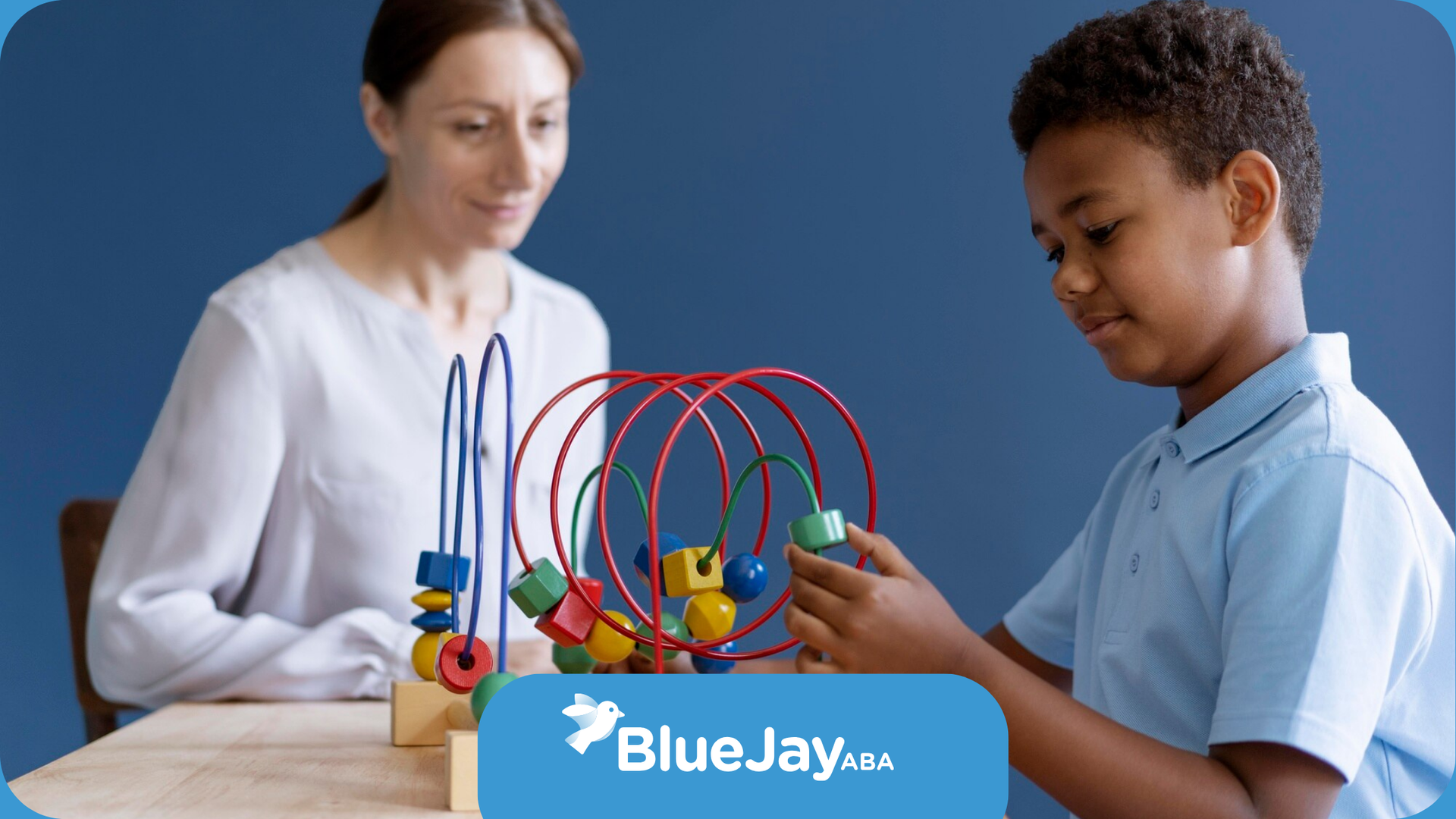Understanding Errorless Learning Strategies
Errorless learning, a cornerstone in ABA therapy, focuses on minimizing errors during skill acquisition to enhance the learning process. By utilizing various prompting techniques and prompt fading strategies, errorless learning aims to foster independence and accuracy in learners. This powerful technique significantly benefits individuals with developmental disabilities, such as autism, by providing immediate feedback and reducing anxiety. Understanding the essence and principles of errorless learning is essential for effective implementation in educational and therapeutic settings. Let's delve deeper into the world of errorless learning and discover its transformative impact.
The Essence of Errorless Learning in ABA Therapy
Errorless learning in ABA therapy is a powerful technique that focuses on minimizing errors during the learning process to promote successful skill acquisition within ABA interventions. By providing immediate prompts and feedback, this approach ensures the correct response is elicited, enhancing the effectiveness of interventions. In the context of behavior analysis, errorless learning creates a safe and supportive learning environment for individuals with developmental disabilities, such as autism. It emphasizes prompt fading strategies to gradually reduce assistance, leading to fewer errors and increased independence for the learner.
Defining Errorless Learning in the Context of ABA
Errorless learning in ABA refers to a teaching approach where individuals are guided to provide correct responses consistently without experiencing errors during the learning process. This method aims to create an optimal learning environment by using prompts and cues to ensure the individual's success in acquiring new skills through errorless teaching. By minimizing the occurrence of errors and providing immediate feedback, errorless learning enhances the learning process and boosts the individual's confidence. In the context of ABA therapy, errorless learning serves as a powerful technique to promote skill acquisition and target behavior effectively.
The Historical Roots and Development of Errorless Learning
Errorless learning traces back to behavior analysis, focusing on minimizing errors during the acquisition of new skills. Initially applied in the realm of developmental disabilities, errorless learning gradually gained recognition for its effectiveness in teaching a wide range of skills with minimal mistakes. Rooted in the principles of prompt fading and immediate feedback, this approach has evolved into a valuable tool in the field of autism treatment. Over time, it has become a powerful technique in creating a supportive learning environment for individuals with diverse learning needs.
Core Principles Behind Errorless Learning
The core principles of errorless learning revolve around minimizing errors to enhance the learning process efficiently. By providing immediate prompts and feedback, this approach ensures that individuals consistently experience successful outcomes. It focuses on gradual prompting fading within a structured hierarchy to promote independence and mastery of new skills. Tailoring prompt levels to match the learner's abilities is crucial, as is the strategic design of a step-by-step plan for skill acquisition. Errorless learning emphasizes creating a supportive and error-reducing environment to facilitate optimal learning outcomes.
The Role of Prompting in Errorless Learning
Prompting plays a crucial role in errorless learning by guiding individuals towards the correct responses. It involves providing learners with various types of prompts, such as visual, verbal, or physical cues, as well as some type of prompt to facilitate the acquisition of new skills. By adjusting the prompt level based on the learner's skill level, prompting ensures successful task completion. Prompt fading is gradually introduced to promote independence and reduce errors, ultimately leading to more effective learning outcomes. Implementing prompt fading techniques strategically enriches the learning environment and enhances the overall learning process.
Gradual Fading of Assistance to Foster Independence
In errorless learning, gradual fading of assistance plays a pivotal role in promoting independence. This systematic reduction of prompts empowers learners to apply new skills autonomously. By carefully decreasing the level of support over successive trials, individuals can internalize the correct responses, paving the way for sustained mastery. Through this methodical approach, the transition from guided practice to independent execution is facilitated, ensuring that learners become proficient in the target behavior without continual prompting. This gradual fading process is a fundamental aspect of errorless learning, nurturing self-reliance and skill retention.
Strategies for Implementing Errorless Learning
Identifying appropriate skills and goals is crucial. Designing a detailed plan for skill acquisition enhances the learning process. Customizing prompt levels based on the learner's needs fosters errorless learning. Creating a structured environment with visual prompts aids in skill acquisition. Tailoring the approach to the learner's profile ensures effective implementation.
Identifying Appropriate Skills and Goals for Errorless Learning
When implementing errorless learning, it is crucial to identify skills and goals that align with the learner’s abilities and developmental stage. By selecting tasks that are within the individual's grasp but still offer a challenge, you can ensure a successful learning experience. Setting achievable targets helps in maintaining motivation and engagement. Additionally, focusing on communication skills, basic daily living activities, and core academic concepts can lay a strong foundation for more complex learning tasks. Tailoring these objectives to the learner's specific needs maximizes the effectiveness of errorless learning strategies.
Designing a Step-by-Step Plan for Skill Acquisition
Craft a comprehensive plan for skill acquisition by first identifying the target behavior to be learned. Establish a baseline by assessing the learner's current skill level. Next, outline a series of sequential steps breaking down the skill into manageable components, including utilizing a discriminative stimulus (SD). Assign prompt levels based on the learner's needs, starting with the least intrusive prompts. Implement a structured teaching session using visual prompts or gestural cues as necessary. Provide immediate feedback and reinforcement to reinforce correct responses. Continuously monitor progress and adjust the plan accordingly to ensure effective skill acquisition.
Customizing Prompt Levels Based on Learner Needs
Effective implementation of errorless learning hinges on customizing prompt levels to cater to individual learner needs. By tailoring prompt levels according to the learner’s skill level and response to prompts, instructors can create an optimal learning environment. Direct verbal prompts, physical prompts, or gestural prompts can be adjusted based on the learner's abilities to ensure prompt fading is gradual and successful. An indirect prompt can be pivotal in understanding the learner's preferences and strengths while providing the right support without overwhelming them with prompts. This personalized approach fosters a supportive learning atmosphere, propelling skill acquisition effectively.
Prompt Fading Techniques in Errorless Learning
Prompt fading in errorless learning involves gradually reducing prompts to promote independent responses in learners. The most-to-least (mtl) fading method starts with full assistance and progressively decreases it. Conversely, the least-to-most (ltm) fading approach begins with minimal support and increases as needed. Various types of prompt fading play a significant role in this process. Timing is critical in prompt fading to ensure the learner's success without creating frustration. By mastering prompt fading techniques, educators can empower students to apply new skills autonomously, enhancing the effectiveness of errorless learning interventions.
Most-to-Least (MTL) Prompt Fading Strategy
One widely used approach in errorless learning is the most-to-least (mtl) prompt fading strategy. This method involves starting with strong prompts and gradually decreasing support as the learner progresses. By initially providing significant assistance and then reducing it over time, this technique aims to ensure successful outcomes while promoting independence. MTL prompt fading is particularly beneficial for learners with developmental disabilities as it helps them build confidence and competence in acquiring new skills effectively. This structured approach enhances the learning process by minimizing errors and supporting individuals at their skill level.
Least-to-Most (LTM) Prompt Fading and Its Implications
Least-to-Most (LTM) prompt fading involves starting with minimal prompts and increasing assistance gradually. Beginning with the least intrusive prompt allows learners to attempt a response independently initially. When required, additional support is provided based on individual needs. This method ensures a balance between independence and guidance, promoting successful skill acquisition. By gradually increasing prompts, learners gain confidence and competence in the learning process, leading to improved outcomes. LTM fading is a strategic approach that considers the learner's abilities and fosters a sense of accomplishment.
The Importance of Timing in Prompt Fading
Effective prompt fading in errorless learning hinges on the strategic timing of when to reduce prompts. Timely prompt reduction ensures gradual independence while preventing frustration and confusion. By calibrating the prompt fading process to align with the learner's progress and comfort level, smooth skill acquisition is facilitated. The timing of prompt fading also influences the efficiency of error correction procedures, promoting a seamless transition towards self-reliance.
Advantages of Errorless Learning in Educational Settings
Enhancing learner confidence and motivation, errorless learning reduces anxiety and fear of failure in educational settings. By accelerating the learning process, it fosters a positive learning environment where individuals feel supported and successful. This approach not only boosts correct response rates but also minimizes errors, making it an effective and valuable tool in education. Errorless learning in educational settings aligns with behavior analysis principles and is particularly beneficial for individuals with developmental disabilities, including autism, providing immediate feedback and reinforcement to enhance the learning process.
Enhancing Learner Confidence and Motivation
Encouraging learner confidence and motivation is vital in errorless learning. By providing immediate prompts and feedback, individuals with developmental disabilities, such as autism, can experience success from the start. This boosts their self-assurance and eagerness to engage in the learning process. Reinforcement plays a crucial role in maintaining motivation levels, ensuring that learners feel supported and valued throughout their skill acquisition journey. Errorless learning acts as a valuable tool in nurturing a positive learning environment that promotes confidence and continuous progress.
Reducing Anxiety and Fear of Failure
Errorless learning plays a crucial role in reducing anxiety and fear of failure among learners. By providing a supportive and nurturing learning environment, where errors are minimized through effective prompting techniques, individuals experience a sense of accomplishment with each correct response. This approach fosters a positive association with learning, leading to increased confidence and motivation to engage in the learning process. Ultimately, the reduction of anxiety and fear of failure empowers learners to tackle challenges without the burden of past mistakes, promoting a more positive and conducive learning experience.
Accelerating the Learning Process
Errorless learning accelerates the learning process by minimizing errors and providing immediate feedback. By using prompt fading strategies tailored to the learner's skill level, new skills are acquired efficiently. This technique reduces frustration and boosts motivation, leading to quicker mastery of target behaviors. With fewer errors to correct, the focus remains on reinforcing correct responses, expediting the overall learning trajectory. The benefits of errorless learning in accelerating skill acquisition make it a valuable tool in educational and therapeutic settings.
Challenges and Considerations in Errorless Learning
Assessing when errorless learning is most effective involves understanding the balance between providing a safe learning environment while allowing room for growth through error-making opportunities. Tailoring approaches to individual learner profiles is crucial in navigating this fine line. Differentiating prompts based on the learner's skill level and minimizing prompt dependency are key challenges. Balancing the need for immediate prompts with the necessity of prompt fading to promote independence requires a strategic approach. Ensuring that errorless learning remains an effective tool involves continuous assessment and adjustment.
Assessing When Errorless Learning is Most Effective
Errorless learning is most effective when teaching individuals with developmental disabilities, like autism, to minimize errors and promote learning success. It is valuable for learners with communication skills deficits or sensory overload issues. Assessing the learner's skill level is crucial to determine the appropriate prompt level and fading strategy. Errorless learning is particularly beneficial when introducing a new skill, ensuring immediate prompts and feedback to reinforce correct responses. By tailoring approaches to individual profiles and needs, errorless learning can be effectively implemented in various learning environments.
Balancing Errorless Learning with Error-Making Opportunities
Errorless learning should be balanced with error-making opportunities to promote overall learning effectiveness. While minimizing errors is crucial for confidence and motivation, occasional errors are essential for growth. By providing opportunities for mistakes, learners can understand the consequences of errors and enhance resilience. Balancing errorless learning with error-making situations creates a well-rounded learning environment, fostering a deeper understanding of concepts and improving problem-solving skills. This equilibrium between errorless learning and error-making opportunities optimizes the learning process, ensuring comprehensive skill acquisition.
Tailoring Approaches to Individual Learner Profiles
Individualizing errorless learning to learner profiles is foundational in achieving maximal effectiveness. Tailoring prompts to the learner's skill level and preferred communication style ensures optimal engagement and comprehension. By assessing each individual's unique needs, educators can customize prompt levels and fading strategies accordingly. Understanding the nuances of sensory processing and developmental abilities enables the creation of tailored errorless learning experiences. Flexibility in approach, considering factors like prompt type and reinforcement preferences, enhances the adaptability of errorless learning interventions for diverse learner profiles. Employing a personalized approach fosters a supportive and conducive learning environment.
Real-world Applications of Errorless Learning
Errorless learning finds practical application across diverse domains such as language acquisition, daily living skills training, and vocational skills development. In language acquisition, it aids in enhancing communication skills by minimizing errors. Errorless learning is instrumental in daily living skills training, where it helps individuals with developmental disabilities perform tasks independently. Moreover, in vocational skills development, errorless learning accelerates the learning process, ensuring efficient skill acquisition. Its universal applicability underscores errorless learning as a valuable tool in various real-world scenarios, contributing to enhanced learning outcomes.
Errorless Learning in Language Acquisition
Errorless learning in language acquisition involves utilizing error correction procedures to teach new language skills within an ABA therapy framework. By providing immediate prompts and feedback, learners can acquire communication skills effectively. Different types of prompts, such as verbal or visual prompts, are tailored to the learner's skill level to minimize errors and ensure their assent for participation. This approach is particularly beneficial for individuals with developmental disabilities, like autism, as it creates a supportive learning environment and enhances the learning process.
Utilizing Errorless Learning in Daily Living Skills Training
Errorless learning is a powerful technique in daily living skills training for individuals with developmental disabilities. By utilizing errorless learning strategies, such as providing immediate prompts and feedback, learners can acquire a wide range of skills in tasks like personal hygiene or meal preparation. Implementing prompt fading methods ensures independence as individuals progress. This approach minimizes errors, reduces frustration, and boosts confidence, making errorless learning an effective tool in enhancing the quality of life for individuals with diverse needs.
Errorless Learning and Vocational Skills Development
Errorless learning plays a vital role in vocational skills development, particularly for individuals with developmental disabilities. By systematically introducing and reinforcing correct responses without the risk of errors, this approach helps learners acquire job-related skills effectively. Implementing errorless learning in vocational training creates a supportive learning environment where individuals can focus on mastering new skills without the fear of failure. This technique not only accelerates the learning process but also boosts confidence and motivation, essential factors in preparing individuals for successful employment opportunities.
Conclusion
In conclusion, when exploring errorless learning strategies, it’s crucial to work with autism therapists who are well-versed in this approach. By ensuring that learning is tailored to the child's needs and focuses on reducing errors, these therapists play a pivotal role in enhancing a child’s ability to master new skills with confidence. If you’re seeking autism therapists near me, connecting with experienced professionals near you can make all the difference. Reach out today to find expert therapists who specialize in creating a supportive and effective learning environment.
At Blue Jay ABA, we specialize in using errorless learning strategies to create a supportive and positive learning environment for children with autism. By focusing on minimizing mistakes during the learning process, we help build confidence and mastery of new skills. Our dedicated team of experts ensures that each session is tailored to your child’s unique needs, fostering a smooth and effective learning journey. Ready to see how errorless learning can empower your child? Contact us today and take the first step toward transformative progress!
Frequently Asked Questions
What makes errorless learning different from traditional teaching methods?
Errorless learning differs from traditional teaching by minimizing errors through prompt fading, fostering independence gradually. By customizing prompts based on learner needs, it accelerates skill acquisition while boosting confidence and motivation. This tailored approach enhances learning outcomes significantly.
Can errorless learning be applied to all age groups?
Errorless learning can be effectively applied to learners of all ages. Its tailored approach and gradual assistance fading make it adaptable across various age groups, ensuring skill acquisition and fostering independence.
How do I measure progress in an errorless learning framework?
By assessing mastery of skills through errorless trials, progress can be measured in an errorless learning framework. Prompt fading and independence levels reached indicate learner advancement. Customized goal achievement assessments track skill acquisition effectively.
Need Assistance?
We’re Here to Help
Our expert team is ready to support your child’s development and well-being.
We are committed to offering tailored ABA therapy solutions that promote growth.
Contact us today for Professional ABA Therapy.
Related Posts
MENU
GET IN TOUCH
STAY CONNECTED
Join our newsletter and find out more
NewsletterFooter
We will get back to you as soon as possible
Please try again later








